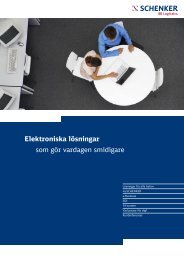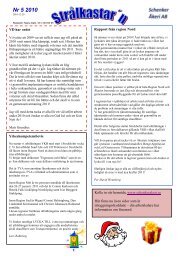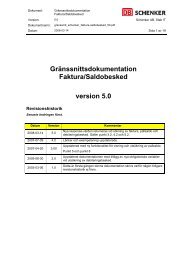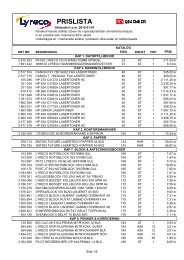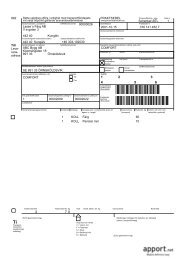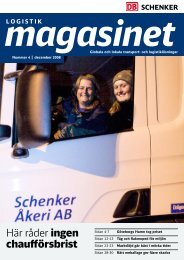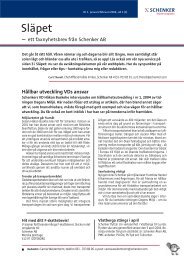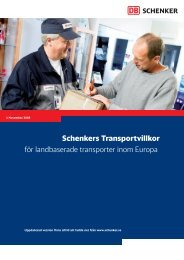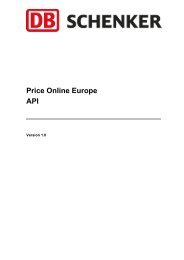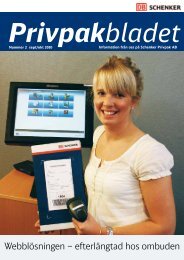Ecological Transport Information Tool for Worldwide ... - Schenker
Ecological Transport Information Tool for Worldwide ... - Schenker
Ecological Transport Information Tool for Worldwide ... - Schenker
You also want an ePaper? Increase the reach of your titles
YUMPU automatically turns print PDFs into web optimized ePapers that Google loves.
IFEU Heidelberg, Öko-Institut, IVE, RMCON Page 17<br />
3.2.2 Definition of capacity utilisation<br />
In EcoTransIT World the capacity utilisation is defined as the ratio between freight mass<br />
transported (including empty trips) and payload capacity. Elements of the definition are:<br />
Abbr. Definition/Formula Unit<br />
M Mass of freight [net tonne]<br />
CP Payload capacity [tonne]<br />
LFNC Load Factor: mass of weight / payload capacity [net tonnes/tonne capacity];<br />
LFNC = M / CP [%]<br />
ET Empty trip factor: Additional distance the vehicle/vessel runs empty related to [km empty/km loaded], [%]<br />
loaded distance allocated to the transport.<br />
ET = Distance empty / Distance loaded<br />
With these definitions capacity utilisation can be expressed with the following <strong>for</strong>mula:<br />
Abbr Definition/Formula Unit<br />
CUNC Capacity utilisation = Load factor / (1 + empty trip factor) [%]<br />
CUNC = LFNC / (1+ET)<br />
Capacity utilisation <strong>for</strong> trains<br />
For railway transport the load factor in the given definition is often no figure which is statistically<br />
available. Normally railway companies report net tonne kilometre and gross tonne kilometre.<br />
Thus the ratio between net tonne kilometre and gross tonne kilometre is the key figure<br />
<strong>for</strong> the capacity utilisation of trains. In EcoTransIT World capacity utilisation is needed as<br />
input. For energy and emission calculation capacity utilisation is trans<strong>for</strong>med to net-grossrelation<br />
according the following rules:<br />
Abbr. Definition Unit<br />
EW Empty weight of wagon [tonne]<br />
CP Payload capacity [tonnes]<br />
CUNC Capacity utilisation [%]<br />
Abbr.<br />
CUNG<br />
Formula<br />
Net-gross relation = capacity utilisation / (capacity utilisation + empty wagon<br />
weight / mass capacity wagon).<br />
CUNG = CUNC/(CUNC + EW/CP)<br />
[net tonnes/gross tonne]<br />
In EcotransIT World empty wagon weight and payload capacity of rail wagons are defined<br />
(see chapter 3.2.1), thus the <strong>for</strong>mula <strong>for</strong> the trans<strong>for</strong>mation of capacity utilisation into netgross-relation<br />
is:<br />
Abr Formula Unit<br />
CUNG CUNG = CUNC/(CUNC + 23/61) [net tonnes/gross tonne]<br />
EcoTransIT World: Methodology and Data – July 15 th , 2010



